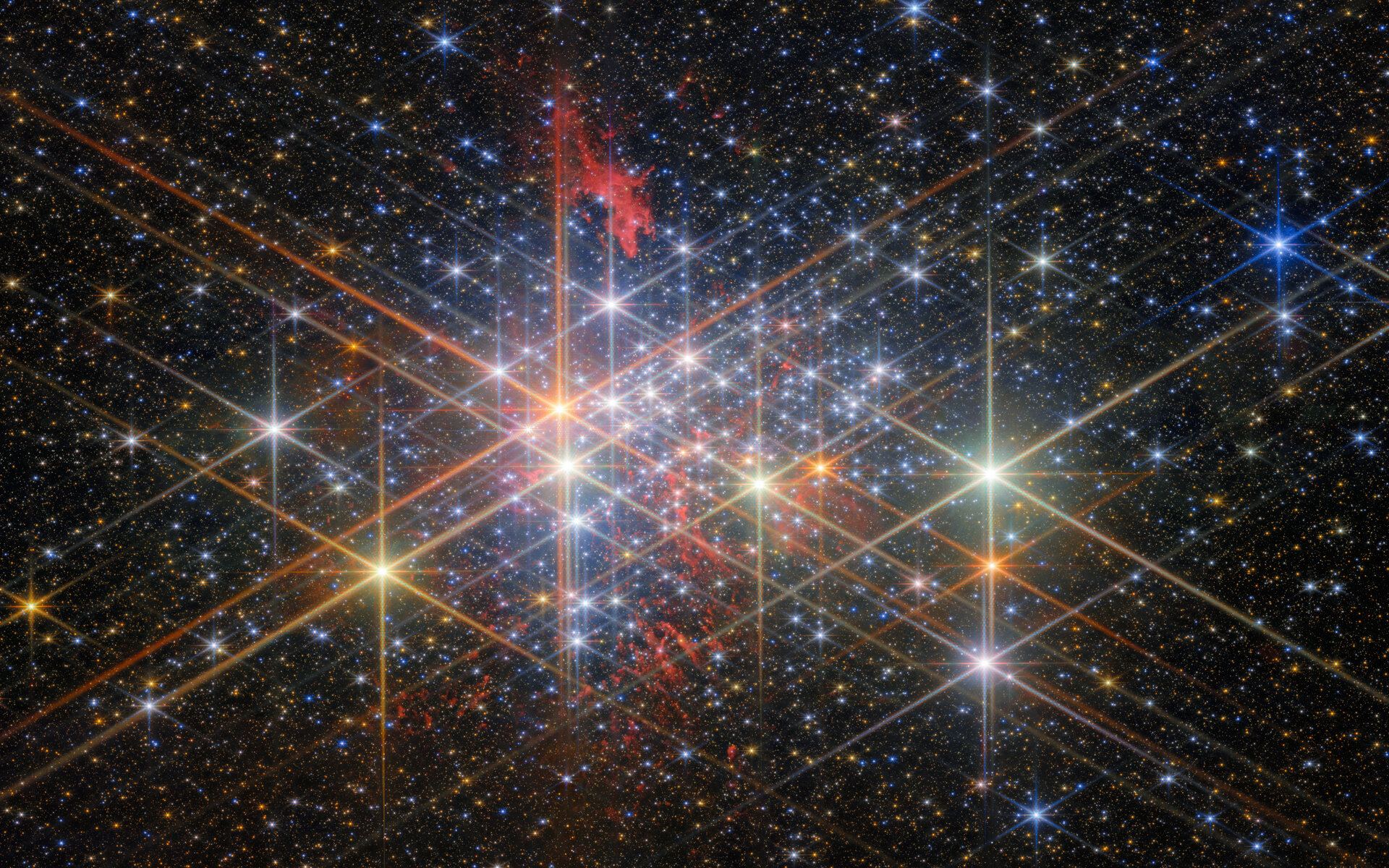
October 8, 2024 by Carolyn Collins Petersen
Collected at: https://www.universetoday.com/168840/the-open-star-cluster-westerlund-1-seen-by-webb/
A long time ago, the Milky Way Galaxy was busy being a prodigious star-formation engine. In those times, it turned out dozens or hundreds of stars per year. These days, it’s rather more quiescent, cranking out only a few per year. Astronomers want to understand the Milky Way’s star-birth history, so they focus on some of the more recent star litters to study. One of them is Westerlund 1, a young so-called “super star cluster” that looks compact and contains a diverse array of older stars. It was part of a burst of star creation around 4 to 5 million years ago.
Several observatories have looked at Westerlund 1, including the James Webb Space Telescope. Its observation is part of a project called the Extended Westerlund 1 and 2 Open Clusters survey (EWOCS) using the near-infrared camera on the telescope. Why use NIRCam to look at bright stars in an open cluster? It’s because Westerlund 1 is challenging to observe. It lies (from our point of view) behind an obscuring cloud of gas and dust that absorbs or scatters most of the visible light coming from the cluster. Infrared light gets right through, however, so that made it easier to study and characterize the stars in this cluster. It’s also observable in X-rays, allowing astronomers to pinpoint energetic sources in the cluster.
The Webb view reveals the full range of stars in Westerlund 1, making it easier to spot the various stellar types. In addition, the NIRCam image shows patches of reddish gas in and around the cluster.

About Westerlund 1
This collection of stars may be the most massive known cluster of its kind in the Milky Way Galaxy. Astronomers estimate it contains up to 100,000 times the mass of the Sun. Its population consists almost entirely of red supergiants, yellow hypergiants, and at least one luminous blue variable, in addition to other types of giants. There’s also an X-ray pulsar in the cluster and a magnetar that formed from a supernova explosion. The whole collection occupies a region less than six light-years across.

Westerlund 1 probably formed about 4 to 5 million years ago in one massive burst of star formation. Its age makes it an infant in stellar “years” and many of its massive, giant-type stars have short lifetimes. Compared to the Sun’s projected 10-billion-year lifetime, just one of those supergiant stars will live only about 20 million years at the most. Then, it will explode as a supernova, scattering its remains across space.
Astronomers estimated the age of Westerlund 1 based on a comparison of older, more evolved stars to well-understood models of stellar evolution. Those models suggest typical ages of stars of varying masses. This cluster pushes the boundaries of the models, with its red and yellow supergiants, as well as Wolf-Rayet stars (highly evolved and massive). The red supergiants, for example, don’t typically get to that stage for a least 4 million years. Wolf-Rayet stars, which are extremely bright and hot, don’t live very long. Due to their brief lifetimes, these weird old stars are also quite rare.
Living with this Cluster
Westerlund 1 provides important clues about the origin and evolution of young, massive stars in clusters. The different populations there tell a story about this cluster’s formation and effect on its nearby neighborhood. First, the diverse mix of stars gives clues to its “initial mass function”. That describes the distribution of stellar masses in a cluster—that is, how many stars of different masses formed from the original star-birth crèche.
What’s equally interesting is what this cluster’s stars will do in the future. Since there are so many massive stars and so few supernovae remnants there, it’s only a matter of time before the stellar fireworks begin. Over 40 million years, more than 1,500 supernovae will occur, making Westerlund 1 a brilliant spectacle for study.
In the long term, Westerlund 1 will likely evolve from an open cluster into a spherically shaped conglomeration of stars called a globular cluster. For now, this cluster presents an extreme environment in which stars and planets (if there are any) can form. Plus, it’s rare. Only a few like it still exist in our galaxy, offering clues to that earlier era in Milky Way history when most of its stars formed. That’s why it’s considered a “laboratory” where astronomers can study the evolution of high-mass stars.
For More Information
The Exotic Stellar Population of Westerlund 1
Westerlund under the Ligh tof GAIA EDR3: Distance, Isolation, Extent, and a Hidden Population

Leave a Reply